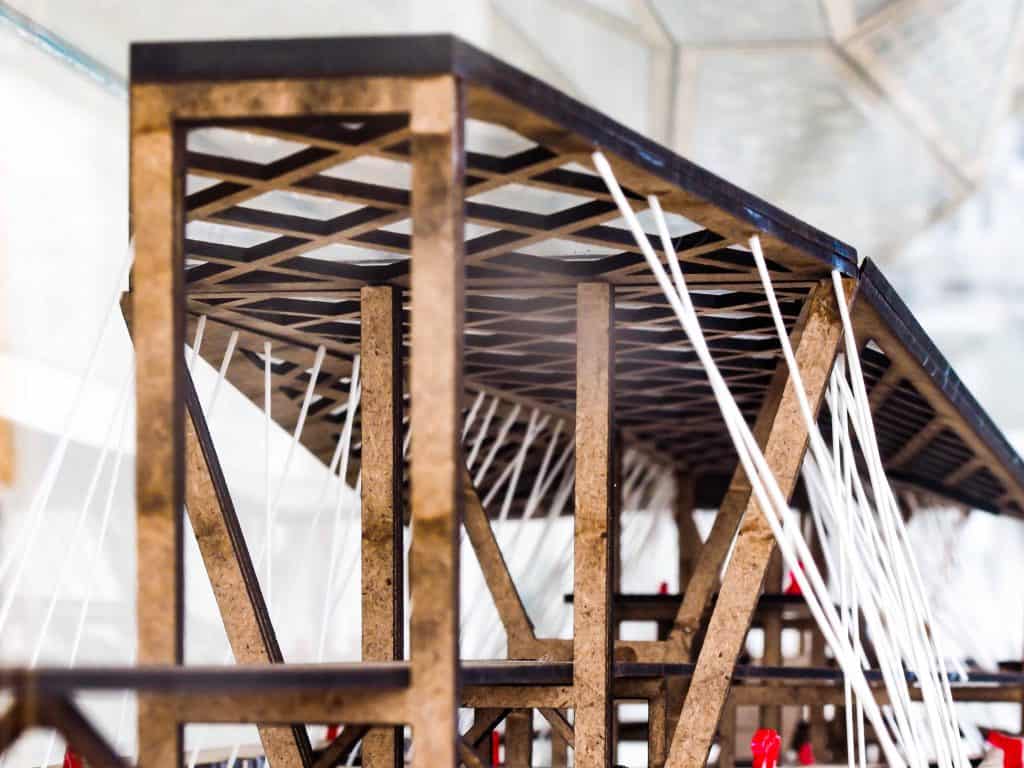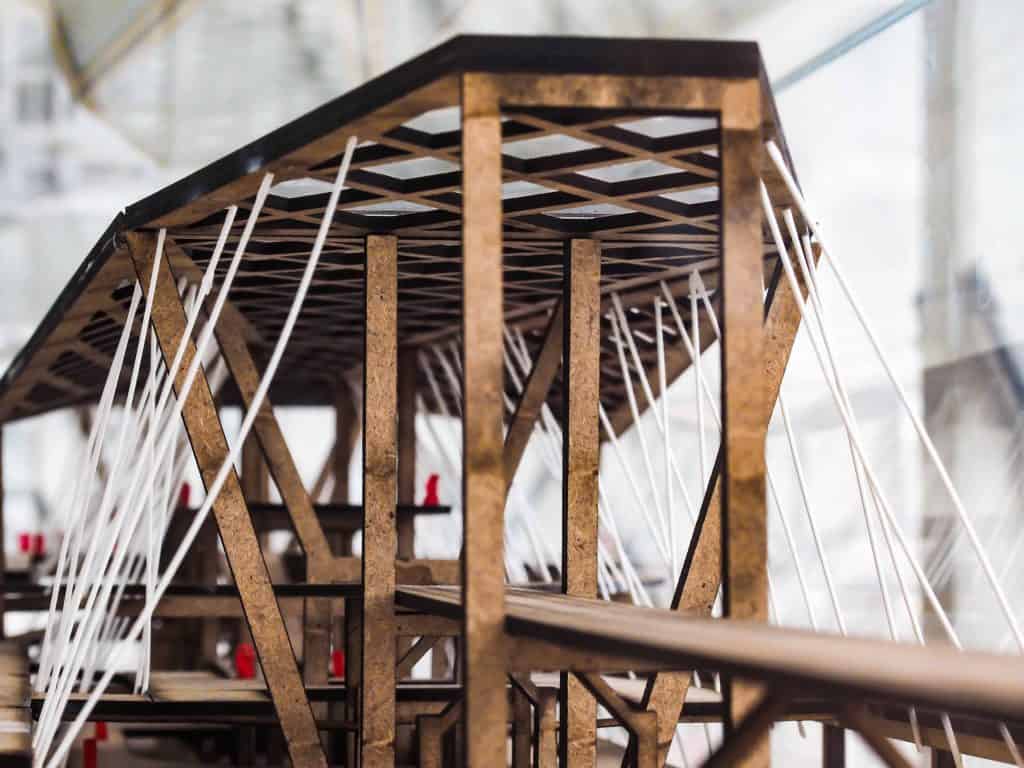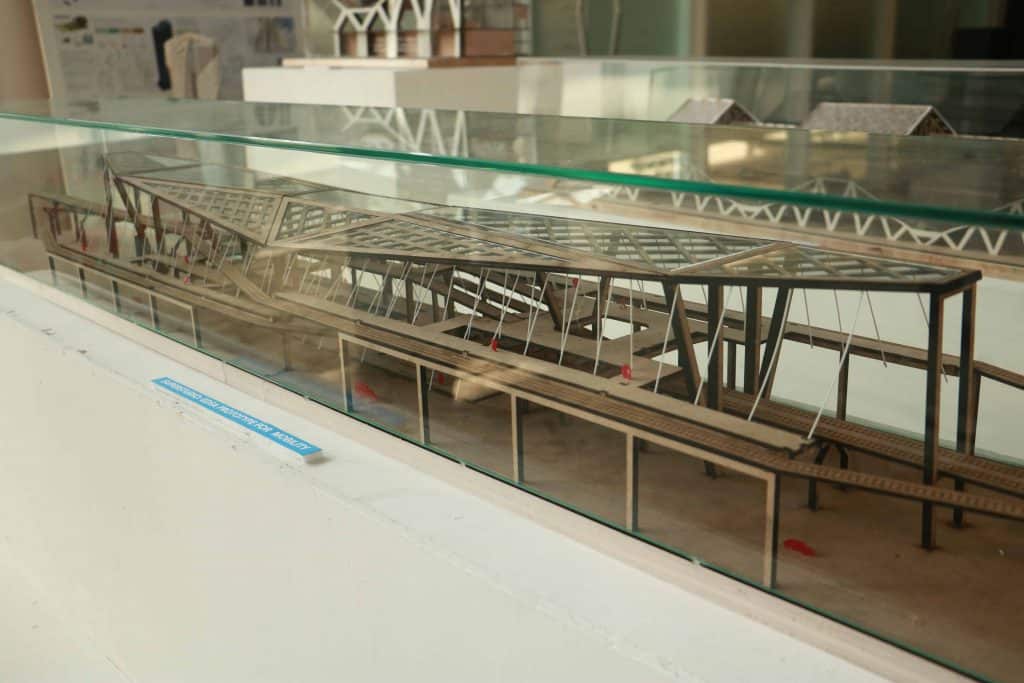There may be hope yet for the ubiquitous MRT-3 (Metro Rail Transit 3) crowding.
Two architecture students from the De La Salle-College of Saint Benilde School of Design and Arts created a scale model of an ingress-egress scheme for passengers at the MRT-3’s extremely congested Ayala station.
With the guidance of their professors Architects Ven Quizon and Jimmy Caumeron, Noel Narciso and Bea Villoria came up with the “EDSA Prototype for Mobility Project” that aims to manage the movement of people at the overcrowded MRT-3 station in Makati.

Among the features of their design is a “diagonal ramp that intersects all slabs and is placed on both sides of the structure connected by bridges crossing above” that pedestrians can utilize to avoid jaywalking.
“As a fellow regular MRT user, I am guided by the principle that pedestrians must be prioritized in a humane way,” Narciso said.
Villoria, on the other hand, integrated the concept of a rotunda to her prototype that features well-lit bigger sidewalks at the ground level.
“A rotunda lessens traffic without taking up much space. This is evident in my design through the numerous walkways making up majority of the station,” she said. “With more space available, I was able to maximize the different heights and its interconnectivity. Each can be visible from any point, making it easier to see which concourse has fewer people, or if a train is approaching.” Villoria also included ramps for the persons with disabilities.

As for the design, Narciso and Villoria integrated a sky garden at the uppermost level of the structure, which commuters can visit to see the skyline of the metro.
“Commuters often stay in the lower level. With the help of the attraction on top, they will have reasons to go up and visit,” Villoria said.
The students believe that the current situation of the riding public is considered “inhuman” for Filipinos, and maintained that taxpayers deserve more.


“The number one takeaway is that Filipinos today are really suffering and, there is a very great potential for government to actually give Filipinos a higher standard for urban transport,” Narciso said.
Although their creation is only a prototype, Narciso and Villoria believe that someday, their design could be turned into reality with the help of concerned agencies.
“We do not want the students to lose their idealism as designers. The moment you teach them the limit of design in school, they won’t be able to see the possibilities of what imagination can bring them,” Caumeron said.

